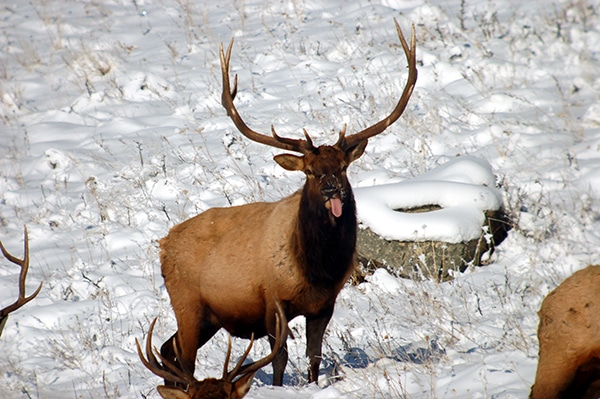
Hunters are often asked to give up opportunity when a game species is struggling. And as conservationists, we know that it’s the responsible thing to do for the long-term health of our cherished public wildlife resources. In Montana, we have a long history of stepping up and doing just that. An excellent example is with antelope in eastern Montana following the brutal winter of 2010-2011. We went from 13,000 either sex licenses and an additional 7,000 doe tags to a total of 3,000 tags in southeastern Montana. It was a tough change, but that herd is recovering. Future generations will thank us for protecting their opportunity to hunt these antelope.
Hunting District 313, near the town of Gardiner on the north boundary of Yellowstone National Park, is another example where we need to limit hunting in order to support the long-term survival of our big game for future generations. The northern Yellowstone elk herd, which moves between the park and public and private lands north of there, has dropped to an average of just 2.7 mature bull elk per 100 cow elk. The number is below the threshold that Montana Fish, Wildlife and Parks (FWP) considers sustainable, and the agency has proposed to address the situation by going from the current unlimited permit system to a limited draw for 75 bull permits.
This is a dramatic change, but it’s necessary. FWP biologist Karen Loveless has analyzed the data and come up with a science-based recommendation to protection the long-term survival of the herd. That’s what wildlife managers do – they use the best available science to recommend management actions that will keep the herd around for the future.
Unfortunately, FWP’s proposal has encountered some harsh, unwarranted criticism. Last week, the agency held a public information session on the proposal where several outfitters and area hunters criticized Loveless’ data. They pointed to a couple years when the herd wasn’t surveyed, including one year when the agency skipped the survey for budget reasons, to refute all of the data the agency has assembled. One outfitter repeatedly questioned Loveless’ educational background.
We can’t stick our heads in the sand or talk our way out of paying attention to good science. Facts are facts. The herd in HD 313 is struggling when it comes to bull-cow ratios. It’s been on the decline, despite the fact that the overall herd numbers are rising. Some who oppose the proposal are making claims about how much money it could cost the town of Gardiner to limit permits, but doing nothing will cost even more.
The Montana Wildlife Federation supports FWP’s efforts to recover the Gardiner elk herd. As hunters and conservationists, our first priority should always be the long-term survival of the public wildlife resource, managed with the best science. We can thank past generations for limiting their own hunting opportunity so that we can enjoy the best wildlife in the West today. We owe the same to future generations.
Nick Gevock is Montana Wildlife Federation’s Conservation Director.

